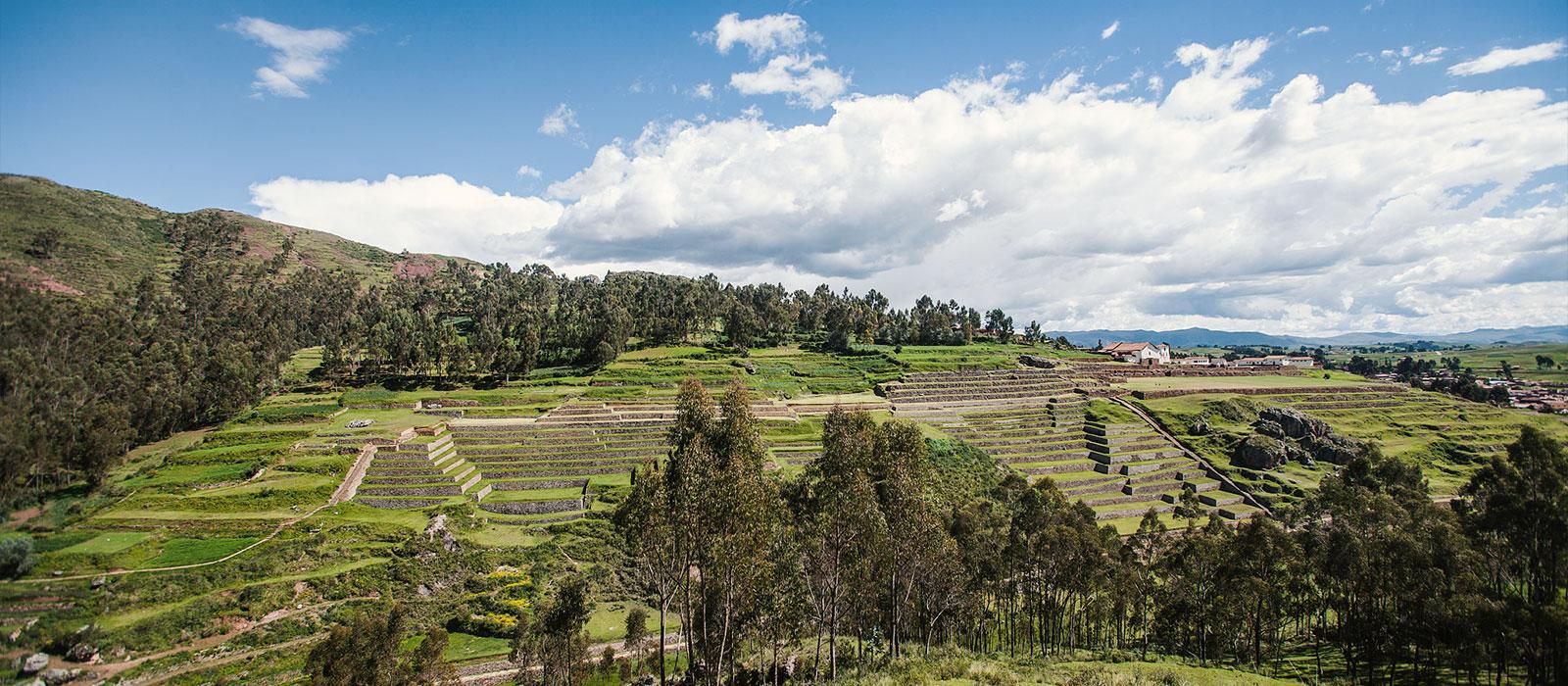
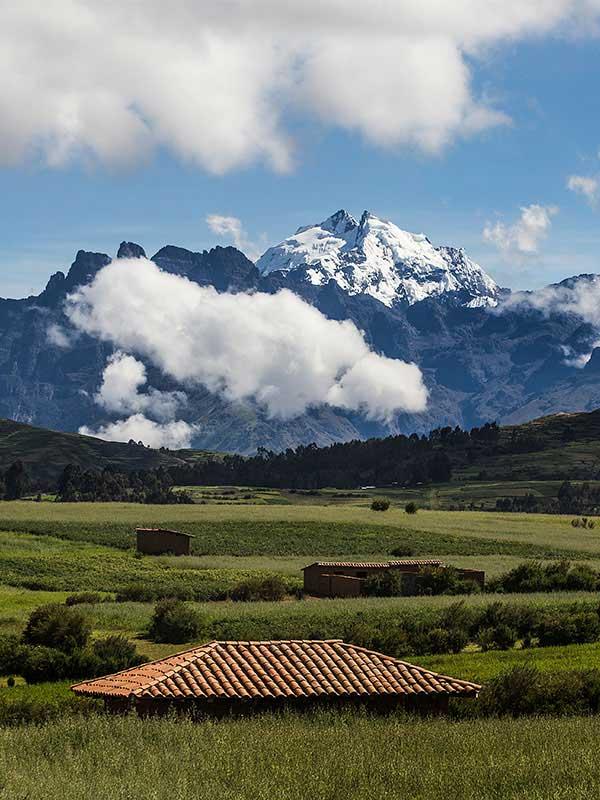
The Sacred Valley is a must-see destination for any traveler to Peru. Conveniently situated halfway between Cusco and Machu Picchu, it is home to some of Peru’s most awe-inspiring archeological sites. From the circular terraces of Moray to the imposing fortress of Ollantaytambo, your first encounter is likely to be as exhilarating as it is unforgettable.
The valley is also the best place in the region to enjoy adventure activities. Kayak white waters on the Urubamba River or ride a horse or ATV through undulating hills and farmland. Independent travelers can also opt to set out on foot to some of the more secluded Inca ruins.
Following an adventure-packed day, rest and enjoy night skies lit by a million stars. The Urubamba River cuts through the valley and snow-capped mountains soar on all sides. Enjoy the gardens of a cozy boutique hotel or the luxurious spa of a 5-star property. No matter where you stay, the clean, crisp air and breathtaking scenery will soothe you into a blissful calm.
The Sacred Valley lies between Cusco and Machu Picchu in the southern region of the Peruvian Andes. The valley was formed over thousands of years, as a result of erosion from the Urubamba River (also known as the Vilcanota River). Due to its lower elevation, the valley experiences a warmer climate than Cusco. In fact, temperatures rarely drop to or below freezing. This, paired with the area’s fertile soil, makes it the perfect location for agriculture. It was historically, and still continues to be, the region’s center for maize production.
The Sacred Valley lies between Cusco and Machu Picchu in the southern region of the Peruvian Andes. The valley was formed over thousands of years, as a result of erosion from the Urubamba River (also known as the Vilcanota River). Due to its lower elevation, the valley experiences a warmer climate than Cusco. In fact, temperatures rarely drop to or below freezing. This, paired with the area’s fertile soil, makes it the perfect location for agriculture. It was historically, and still continues to be, the region’s center for maize production.

Like Cusco, the Sacred Valley has a subtropical highland climate. The surrounding mountains, like Veronica and Salkantay, experience low enough temperatures to remain snow-capped all year round. However, due to its lower elevation, the valley enjoys warmer average temperatures than those of Cusco.
From May to September
Days are usually sunny with little chance of rain. Sun protection, like hats and sunscreen, is important, as the sun is very strong at such a high elevation. Nights are often cold, with July being the coldest month.
From November to March
Mornings are generally cloudy with light showers. Afternoons and evenings can bring heavier rains. Average daytime temperatures are typically mild, but nights are chilly. January is the wettest month.
April & October
The weather is variable as the season transitions. Temperatures are very mild overall. October is the warmest month.
Just like Cusco, the Sacred Valley is a year-round destination. The dry season from May to September is a better time to travel if you’re planning to trek or pursue adventure sports.
The rainy season from November to March is ideal for fewer crowds, though you should be prepared with proper gear (quick-drying pants of synthetic material, water-resistant jacket and shoes) to make the most of your stay.

There are no ATMs at the ruins. Be sure to bring enough cash for tips, drinks, and snacks. Just outside the ruins, the Belmond Sanctuary Lodge does accept credit cards at its restaurant.
Tipping/gratuities: Giving a tip to your guide is not expected or required, but it is a great way to show your appreciation for a job well done.
Down in Aguas Calientes, ATMs are located on the major streets, but these are known for often being out of order. Most hotels and restaurants accept major credit cards. Expect slightly higher prices for goods and services including bottled water, meals at restaurants, etc., compared to Cusco or anywhere else in Peru. Tourism is the town’s only industry and everything must be shipped in by train.
Prepare a daypack for your tour of Machu Picchu. You can leave large luggage at your hotel. What you need:
What to wear:
If you spend the night in Aguas Calientes, hotels provide complimentary luggage storage during your Machu Picchu tour.
Note that PeruRail allows a maximum of 11 lbs (5 kgs) of luggage per passenger. You can leave larger and excess luggage in storage at your hotel in Cusco or the Sacred Valley.
Traveling to Peru, especially in the peak season (June, July, August), requires lots of planning several months in advance. This includes booking hotels in Cusco and Aguas Calientes (Machu Picchu), flights to/from Cusco, train tickets to/from Machu Picchu, Huayna Picchu tickets (limited to 400 and sell out weeks in advance) and Inca Trail permits if applicable. Last-minute trips can be pulled off, but limited availability for hotels and train tickets can be an issue.
Your camera phone is sufficient to take quick photos to share instantly with your friends and family back home. But for higher quality photos, you will need a proper camera.
Machu Picchu is lower in elevation than Cusco. Machu Picchu sits at 7,790 ft (2,430 m) while Cusco is at 11,150 ft (3,400 m). Altitude sickness is, therefore, less of an issue at Machu Picchu.
Nonetheless, altitude sickness is a common concern. There’s no foolproof way to prevent the minor symptoms of altitude sickness, such as a headache, loss of appetite, nausea, and shortness of breath. But there are measures you can take to help you acclimatize with more ease. While at higher elevations, be sure to drink plenty of water and eat light meals. During your tour of Machu Picchu, wear sun protection, walk at a comfortable pace, and take rest as needed.
Aguas Calientes, also known as Machu Picchu Pueblo, is the town at the base of the Machu Picchu ruins. Nearly every traveler to Peru passes through this gateway to South America’s most famous ruins.
Getting there:
Getting around:
Aside from the shuttle bus to/from the ruins, the only way to get around town is on foot. If you have luggage, hotel baggage handlers are available to assist with getting bags to/from the train station. Note that due to geography, most streets in Aguas Calientes have either steps or steep inclines.
In English, the valley between Cusco and Machu Picchu is referred to as the Sacred Valley of the Incas. This is a literal translation of the Spanish “Valle Sagrado de los Incas.” In Quechua, too, the valley is referred to as Willka Qhichwa, again meaning “Sacred Valley.”
Between 500 to 1100 AD, the Wari culture, once based in modern-day Ayacucho, expanded its reach to the Sacred Valley. They built and inhabited the impressive complex of Piquillacta (about 45 minutes southeast of Cusco). The Wari likely used this site as a fortress and a launching point to gain control of new lands. The first shallow salt pans at Maras were also constructed by the Wari culture.
The Inca Empire rose to prominence starting in the 14th century. They controlled various regions and cultures, expanding from modern-day Colombia down to Chile and Argentina. An extensive spider web of roads sprawled out of the Inca capital city of Cusco.
The neighboring Sacred Valley served as the Emperor’s breadbasket. Fertile fields provided ample amounts of fresh fruits, vegetables, and grains to feed the capital city. The Incas were even able to improve poorer growing conditions at higher elevations with knowledge gained from agricultural experimentation. They erected impressive structures, including agricultural terraces, temples, and royal palaces, throughout the valley.
When Francisco Pizarro’s forces conquered Cusco during the 1530s, the Inca soldiers retreated first to Ollantaytambo and then to the jungle beyond the Sacred Valley. The last Inca emperor, Tupac Amaru I, was captured in Vilcabamba and taken to Cusco, where he was beheaded in the city’s main plaza.
During the colonial period, religious leaders flocked to Cusco and the Sacred Valley to begin evangelizing the locals. This region was also the center for the acculturation of indigenous populations. In the Sacred Valley, farmers whose lands were once dispersed throughout the region, were forced to move to small villages. Many churches were also erected. The Chinchero church was built in the 17th century. Its thick adobe walls were, in fact, built upon the foundations of an existing Inca temple.
Over time, the Sacred Valley’s oldest Andean traditions have fused with Spanish influence, as well as more modern practices. Today, the small towns of the Sacred Valley attract Peruvians and expats in search of a slower pace. Tourism in the Sacred Valley is on the rise. However, local movements and community-based tourism projects simultaneously work to help preserve ancient Quechua traditions.
Maras’ row upon row of mountainside salt pans were built in pre-Columbian times and are still used by locals today. In fact, only the townspeople of Maras are permitted to produce and sell the crystalline salt. A new pan is created each time a resident marries, meaning that each family has its own. Over time, this has produced thousands of salt wells that completely cover the mountainside. When visiting you can also purchase salt to bring home as a souvenir. Maras salt is especially rich in minerals and comes in fine white and pink varieties. It is also possible to find Maras salt for sale seasoned with herbs and spices.
The Moray archeological site consists of a series of circular terraces, burrowed into the earth like a huge amphitheater. The complex is believed to have served as an elaborate agricultural laboratory for the Incas. Each level of the concentric circles was made to imitate a different elevation. In this way, plants could be tested and adapted to different elevations. In fact, scientists discovered that the circles’ depth creates an impressive temperature difference. The deepest circle at the Moray ruins is 98 ft (30 m). The temperature variation between the top and bottom of the circle is an astounding 27 °F (15 °C).
The town of Pisac was founded just after the Spanish conquest, at the base of the former Inca settlement. Once a quiet Andean village, tourism now brings many visitors on their way to Machu Picchu. The town is well known for its lively artisan market, situated in the main square. Vendors sell handmade textiles, crafts, and jewelry on the hundreds of stalls that line the market’s labyrinthine aisles. Shoppers will even find fresh fruits and vegetables. Contrary to popular belief, the market is open every day of the week. Though the number of stalls does grow on Sundays.
The ruins of Pisac are all that remains of the Inca settlement that existed in this area before the Spanish arrived. The terraces, watchtowers, and fountains are examples of the Inca’s architectural ingenuity, with amazing views over the Sacred Valley. Researchers believe that Pisac was constructed as a stronghold to protect the Incas on the Amazon rainforest side of their empire. They also constructed lines of terraces on one side of the site, which they used for agriculture. In fact, soil was brought from lower elevations in order to increase the crop yield at Pisac (9,751 ft, or 2,972 m).
The town of Urubamba is the principal settlement in the surrounding Urubamba Valley, and nestles on the banks of the Rio Urubamba. It is not often frequented by tourists, as it boasts only very small Incan ruins and few tourist shops. However, in and around Urubamba visitors will find the majority of the Sacred Valley’s luxury hotels. It is also possible to visit the workshops of Pablo Seminario and Mariú Behar, two local expert ceramists.
The name may look intimidating to pronounce, but it’s easy once you break it down: oh-yan-tie-TAM-bo. Now the largest town in the Sacred Valley, there are many things to do in Ollantaytambo. A prime example of Inca urban planning, it’s easy to lose yourself in it’s charming cobblestone streets. Although still a small town, there are plenty of little shops and restaurants to poke your head into. But perhaps most impressive are the well-preserved Ollantaytambo ruins. This imposing fortress was one of the last Inca strongholds against the Spanish conquistadors. When looking for accommodation, consider one of a number of cozy hotels in town. Using your hotel as a base, it is easy to go on a number of different Sacred Valley tours from Ollantaytambo. Many tourists also take the train to Machu Picchu from the Ollantaytambo Train Station.
Chinchero is synonymous with Andean weaving. In fact, the Center for Traditional Textiles of Cusco (CTTC or “Centro de Textiles Tradicionales del Cusco” in Spanish) was founded by native Chinchero artisans. If passing through Chinchero, make a stop to learn about ancestral weaving and dying techniques. Also, be sure to buy some beautifully woven souvenirs. On top of this, there is a colonial era church to see, as well as the lesser-known Chinchero ruins.
Huchuy Qosqo in Quechua translates to “little Cusco.” This imposing Incan archeological site sits just to the north of the city of Cusco at 11,980 ft (3,650 m). The site is believed to have been the royal estate of the Incan emperor Viracocha around 1420 CE. The invigorating thing about this site is that it’s only accessible by foot or on horseback.
What better way to experience the Andean culture than by hiking with the region’s most well-known animal? Take in the beautiful Andean scenery, while learning about llamas and the local biodiversity. Visitors even have the opportunity to take control and herd these adorably fuzzy creatures using traditional Andean herding techniques. Such excursions help support breeding programs for pack llamas and sustainable tourism practices.
There are countless exhilarating hikes throughout the Sacred Valley with a wide range of difficulty levels. Trek to well-known sites like Maras & Moray or Huchuy Qosqo, or go off the beaten path to hidden waterfalls and obscure Inca ruins. For those hoping to lose themselves in wild landscapes and captivating scenery, the options are endless.
Embrace the soaring heights of one of the Sacred Valley’s many rocky façades. Once securely strapped in, climb to the top of a steep rock face on a via ferrata. After enjoying the stunning views of the valley below, glide all the way down on several zip lines. For bold adventurers undeterred by heights, it is also possible to stay overnight in one of Skylodge’s adventure suites—the only sky pods in South America. This is a thrilling experience not to be missed.
Cool off with a river rafting excursion along the white waters of the Urubamba River. There are several places to go rafting on the Urubamba River, which carves its way along the floor of the Sacred Valley. Find rapids as easy as Category I, or routes that reach up to Category III during the rainy season. The glacier water that flows in the river is bone-chilling, so brace yourself!
Blaze along trails that wind through the lush Andean countryside. While mountain biking in the Sacred Valley, experience all sorts of trails, from flat dirt roads to steep zigzagging downhills. Speed by herds of sheep, fields of corn, and traditional Andean villages, and marvel at the surrounding snow-capped peaks. Cyclists will also have the chance to visit awe-inspiring Inca ruins along the way.
Enjoy the breathtaking mountainscapes of the Sacred Valley with the easy gate of the Peruvian Paso horse. Horseback riding is a great way to visit historical Inca sites while connecting with nature. Popular routes include Maras and Moray, as well as Huchuy Qosqo. Many horseback riding trails are little frequented by tourists, so adventurers have the chance to explore undiscovered corners of the valley.
Hop on an ATV and tour the Sacred Valley’s sites. An ATV tour is a smart way of getting a thrill, without pushing yourself too hard at high elevation. Remote back roads lead to popular sites such as Moray and Maras. From grazing farm animals to the highest peaks of the Andes, the surrounding landscapes are nothing short of magnificent.
Drive to placid Lake Piuray near the town of Chinchero. Situated at 9,800 ft (3,000 m) above sea level, Piuray is a perfect Peruvian lake retreat destination. On clear days, visitors even enjoy views of the formidable Salkantay Peak. Delight in a day of tranquil paddling and head to a nearby yoga center for some added relaxation.
Bajada de Reyes is a delightful festival to end the Christmas season. On this day a procession passes through Ollantaytambo. Participants carry the Niño Jesús de Marcacocha (“Baby Jesus of Marcacocha”). Others perform the light-footed and traditional Andean huallata dance. The procession ends in the Niño Samachina chapel.
As may be expected of a Carnival celebration, you’ll find a vast number of festivities throughout the valley. Many communities entertain local residents with traditional music and exuberant dances. Attendees will also spy trees decorated with small presents and colorful objects, called yunzas. Residents can be seen dancing around their community’s yunza during Carnival.
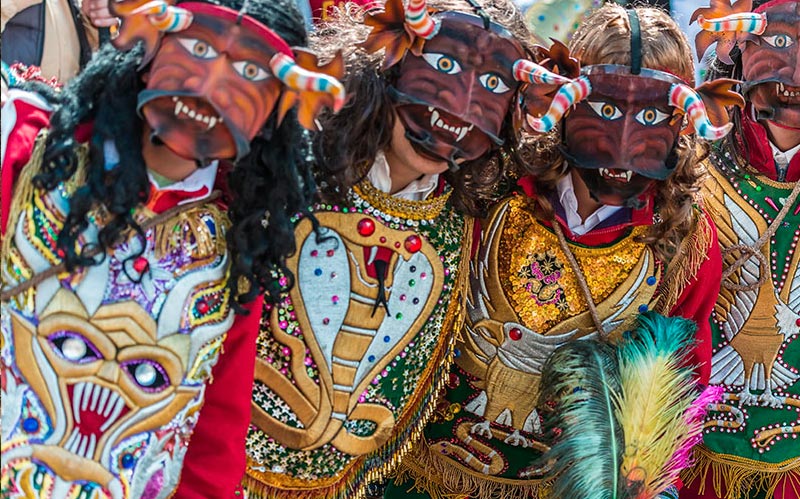
The legend of the cross of Señor de Torrechayoc begins in 1860. Devout villagers erected a cross in a remote area of the snow-covered mountains. The cross was intended to bring good fortune to a newly inaugurated road. Years later, villagers discovered a mysterious second, smaller cross next to their own. Nowadays, this miracle is celebrated alongside Pentecost, with processions, traditional dancing, and plenty of food.
Virgen del Carmen, also known as Virgen de la Mamacha, celebrates the image of the Virgin Mary. In the 17th century, the Spanish sent the image of the Virgin to the indigenous Qolla people in the Sacred Valley. Ever since, they celebrate her arrival with processions and folkloric dancing.

In the 17th century, Diego Quispe, a descendant of the Incas, fled to escape punishment from his Spanish overseer. Hiding in a cave and praying not to be found, he saw a vision of Jesus. Diego Quispe, upon seeing the Savior, offered him a small silver cross. This would become the first adornment of the Temple of El Señor de Huanca. The apparition is celebrated to this day with processions and music centered in Urubamba.
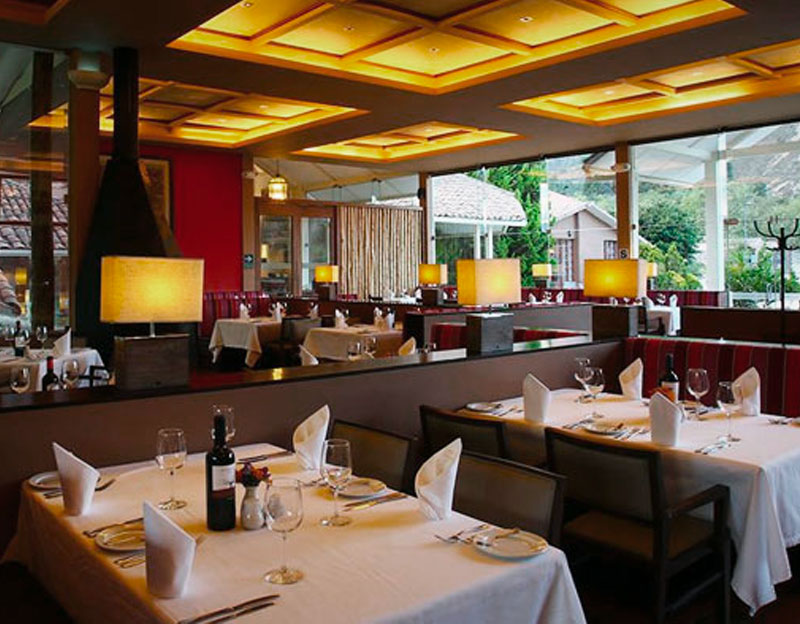
A cozy restaurant adorned with handicrafts made by local artisans and high wooden ceilings. The varied menu includes traditional Peruvian dishes, such as a quinoa-crusted trout. But they also have international fare, like thin-crust pizzas baked in an adobe oven and pasta options. Pair your meal with a pisco sour or local craft beer.
Av. Mariscal Castilla 640, Urubamba
Two blocks from the main plaza of Urubamba, Q’anela specializes in traditional Peruvian cuisine. Dishes include lomo saltado and chicharron de pollo and fusion dishes, like aji de gallina lasagna and mushroom ceviche. Enjoy your delicious meal and the views of the lush green garden and courtyard.
Jr. Grau 654, Urubamba
Locally grown ingredients take center stage at this fine dining restaurant. Try the chicken in aguaymanto (golden berry) sauce or the Amazonian fish on a bed of quinoa risotto.
Tambo del Inka Resort, Av. Ferrocarril s/n, Urubamba
Enjoy beautifully presented seafood including a mixed ceviche, squid-ink spaghetti, shrimp ravioli, grilled octopus, and the flavorful steamed fish. Try a refreshing maracuya sour for a twist on the traditional pisco cocktail.
Recoleta s/n (in front Hotel San Agustin Monasterio), Urubamba
Fresh produce and herbs from the hotel’s garden serve as inspiration for a menu of Andean and international delicacies. Recommended are inspired renditions of classic Peruvian dishes including the “Seco de cordero,” lamb slow-cooked in cilantro sauce and served with mashed potatoes, flavored with Andean herbs; and the “Lomo saltado criollo,” sautéed beef strips served with potatoes and rice.
Belmond Rio Sagrado Hotel, Km 75, Carretera Urubamba-Ollantaytambo
A great place to be bold and try exquisitely prepared Andean specialties including guinea pig, alpaca, and river trout. All dishes feature local ingredients, as in the pumpkin lasagna made with zapallo (local pumpkin) and cheese.
Hotel Sol y Luna, Fundo Huincho lote A-5, Urubamba
Dig into quinoa salad, aji de gallina, alpaca steak, and homemade pasta with lamb ragu. All made with fresh local ingredients. Grab coffee or tea and an on-the-go snack (cookie, brownie, or sandwich) at Cafe Mayu right on the train platform.
Ollantaytambo Train Station
The menu has traditional Peruvian cuisine and Novo-Andean dishes, including some vegetarian options, prepared using locally grown produce.
Pisac main plaza
No other restaurant in the Sacred Valley offers as high-end a dining experience as MIL. This establishment is the creation of chef Virgilio Martinez, renowned for his internationally ranked Lima restaurant Central. On top of avant-garde combinations of purely local flavors, MIL also boasts a coveted view over the Moray ruins.
Complejo Arqueológico de Moray, Maras
Known in Spanish es Cervecería del Valle Sagrado. This brewery skillfully mixes imported malts and hops with local fruits and herbs to create a wide variety of uniquely flavored beers. Enjoy the intimate atmosphere in their small taproom or play lawn games outside.
Vía Urubamba-Ollantaytambo Paradero Puente, Pachar
Altitude sickness is an important thing to consider before traveling to the Peruvian Andes. However, most travelers who experience altitude sickness will have symptoms in Cusco. Since the Sacred Valley sits at a lower elevation, fewer travelers are affected here or have milder symptoms. Travelers concerned about the effects of Cusco’s high elevation can consider going immediately to the Sacred Valley. Still, symptoms may include shortness of breath, headache, and nausea. It is recommended to drink plenty of water*, avoid strenuous physical activity, or take medication (if recommended by your doctor).
*Be sure to only drink bottled or filtered water during your trip. Tap water is not safe to drink anywhere in Peru.
The Sacred Valley is tourist-friendly and most travelers will enjoy an incident-free trip. Avoid opportunist pickpockets by keeping a close eye on your personal belongings in crowded areas. Carry your valuables in a traveler’s wallet around your neck or waist, under your clothing. When possible, leave jewelry, excess cash, and your passport (carry around a paper copy instead) in the safety box at your hotel.
Transportation is included in most private and group tours in the Sacred Valley. These often include pick ups and drop offs at your Cusco and/or Sacred Valley hotels. If you wish to explore on your own, arrange for a taxi or take public transportation (if you are proficient in Spanish). To get to Machu Picchu, most travelers take one of several tourist trains. It is also possible to hike to Machu Picchu with a trekking tour.
The currency in Peru is the Sol, more commonly referred to as soles. It is recommended to carry soles with you for restaurants, taxis, or souvenirs. It is important to carry smaller bills and coins, as small vendors may not have enough change (i.e., bills of 50, 100, or 200 soles). Larger restaurants and shops often accept credit cards. As of July 2020, 1 USD = 3.40 soles.
Because of how rural the Sacred Valley is, it is best to withdraw and/or exchange money before leaving Cusco. In Cusco, you will also have better exchange rates than in the Sacred Valley. Be sure to inform your bank(s) of your upcoming travels and check which withdrawal fees apply.
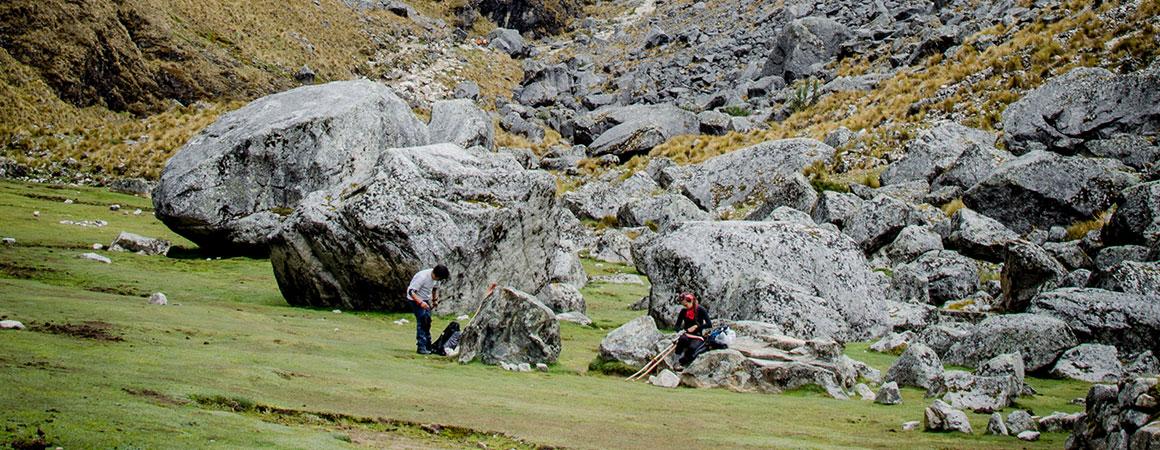
Among the many alternative treks to Machu Picchu, there are a handful we recommend to travelers who want to upgrade their trekking experience.
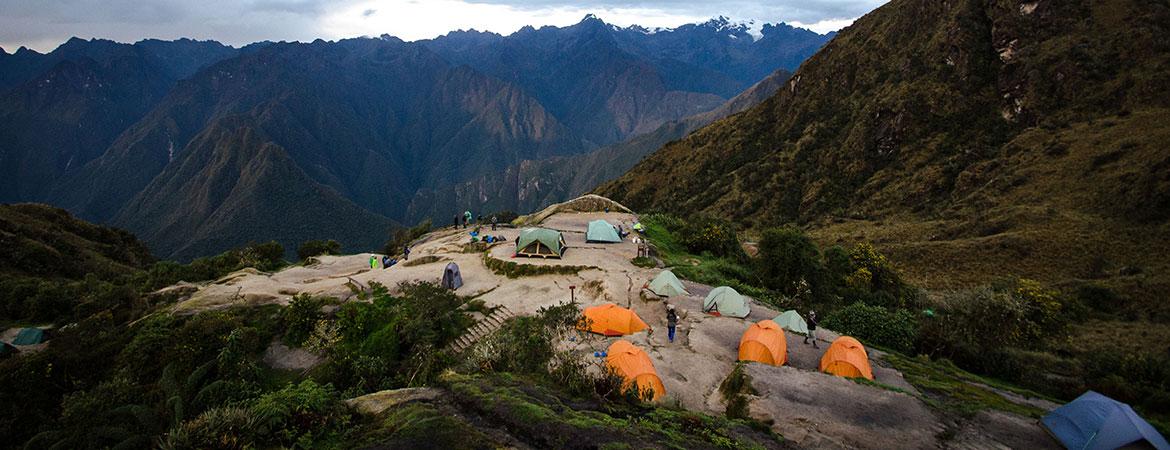
Stretching 42 km (26 mile) from the Sacred Valley to the Sun Gate of Machu Picchu, the classic Inca Trail traverses some of the most riveting landscapes in all of Peru.

Peru's culinary scene hosts rich flavors and a fusion of indigenous ingredients and international influences, with each region offering its own delicious specialties. Peru's diverse gastronomy promises an unforgettable culinary adventure.
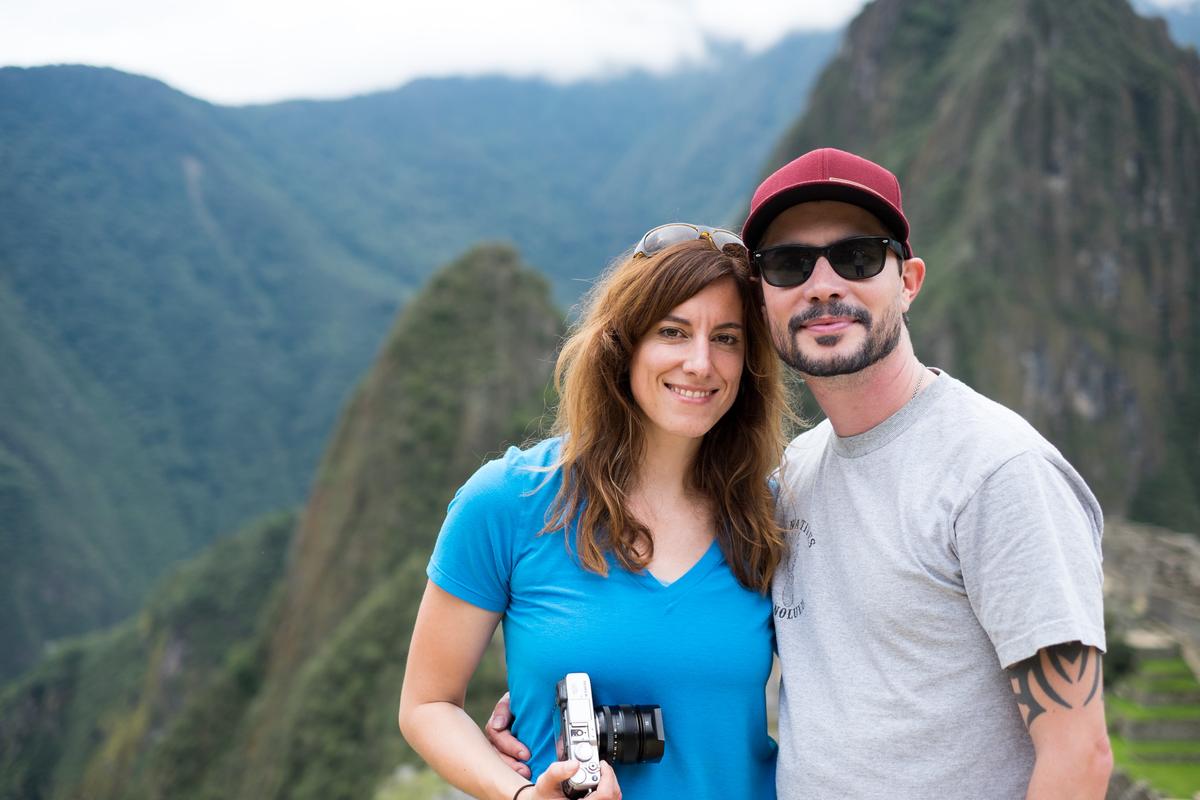
A Peru honeymoon is a dream trip for many couples thanks to the mystical archeological site of Machu Picchu. Combined with Peru’s fascinating history, tranquil landscapes, and uniquely flavorful cuisine, it is one of the most romantic honeymoon destinations in the world.